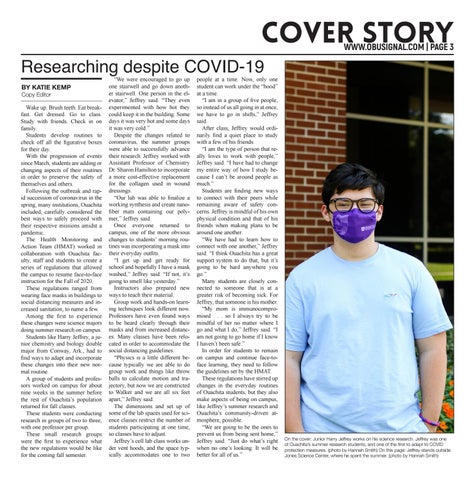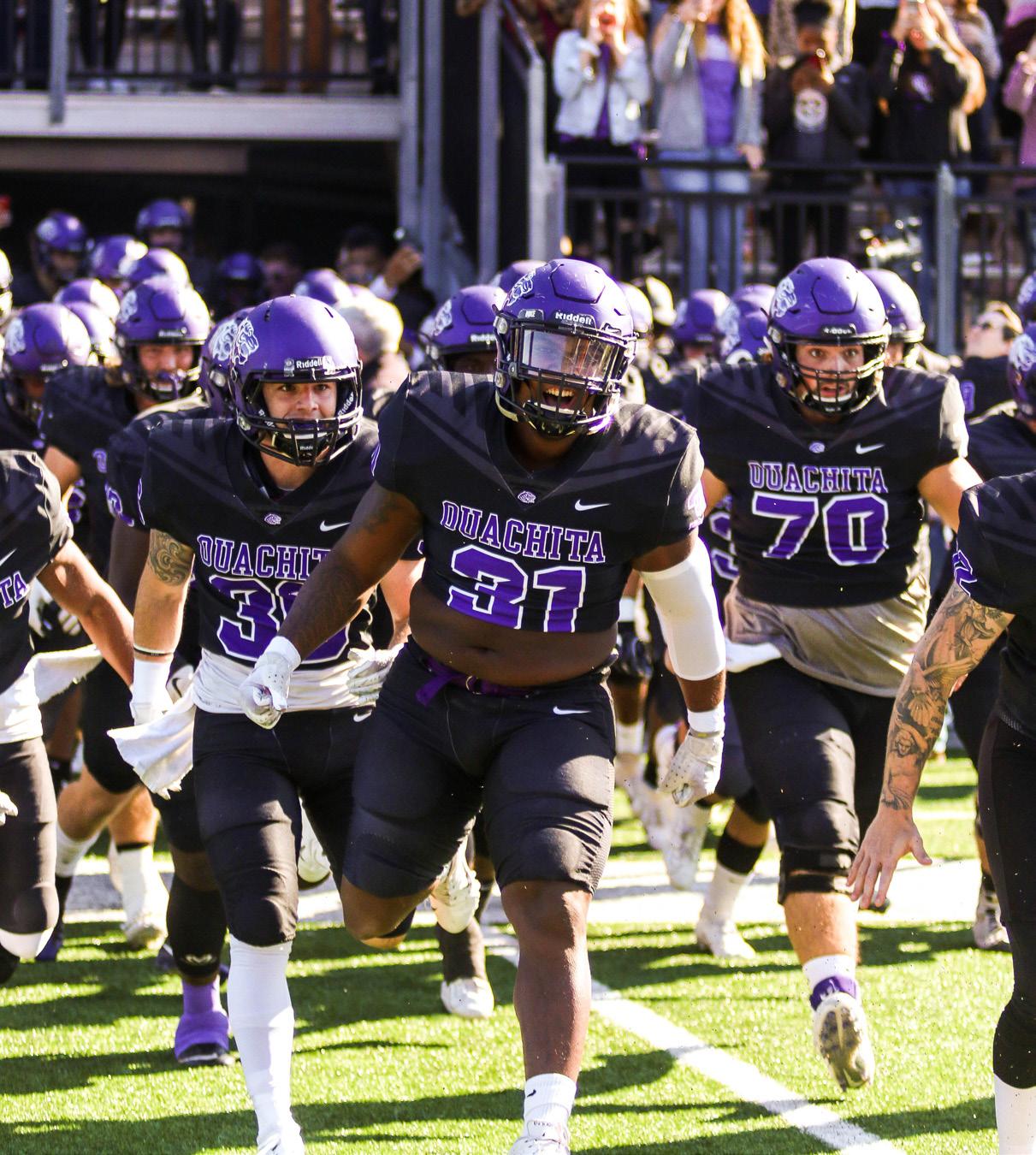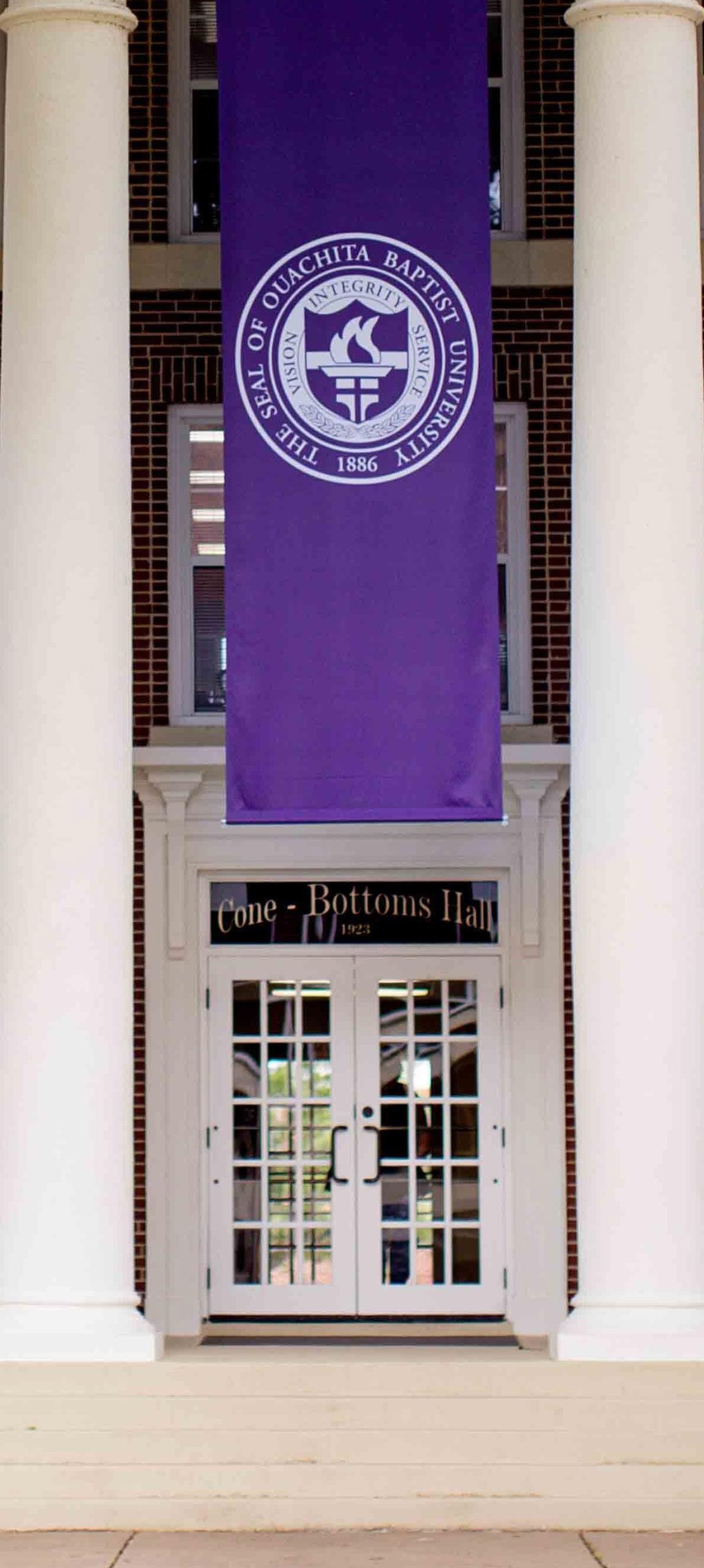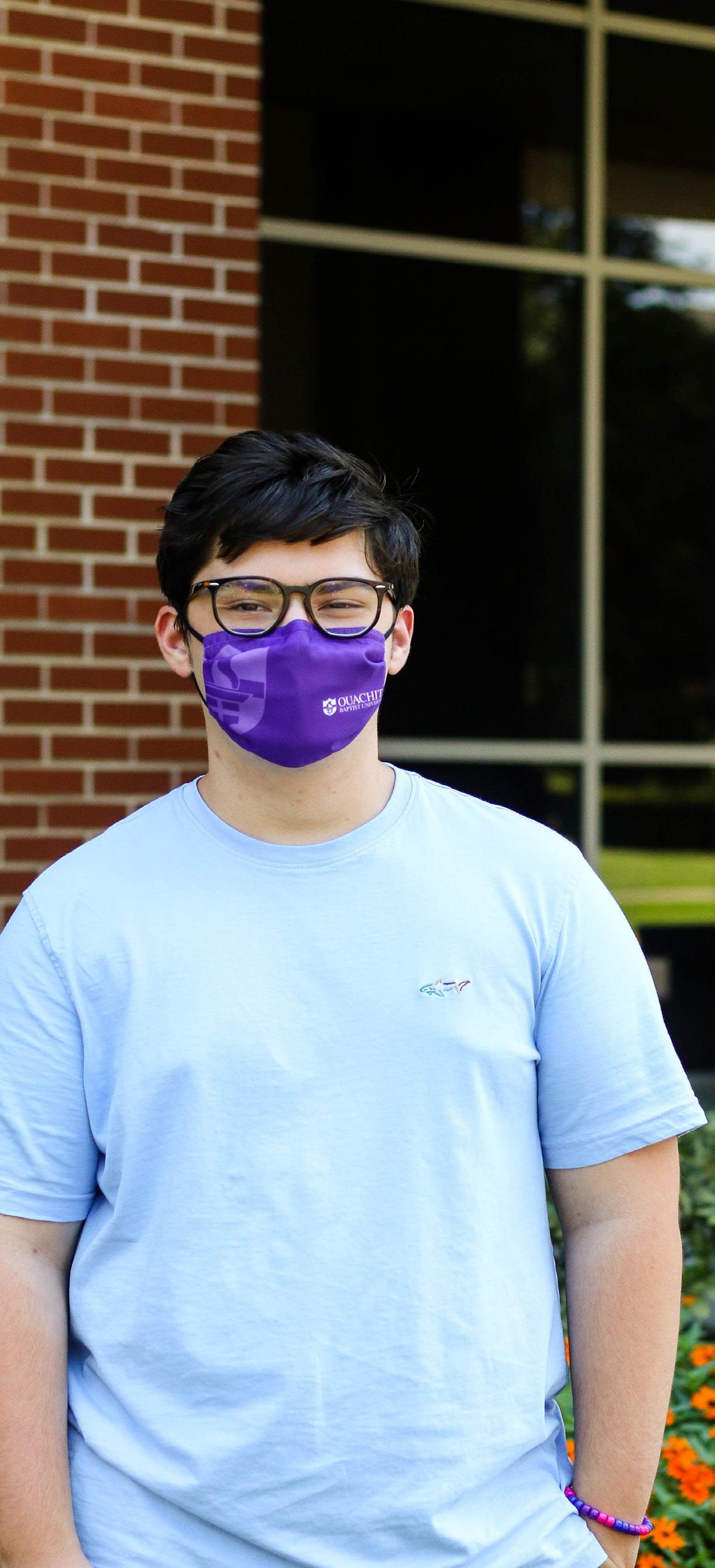cover story WWW.OBUSIGNAL.COM | PAGE 3
Researching despite COVID-19 BY KATIE KEMP Copy Editor
Wake up. Brush teeth. Eat breakfast. Get dressed. Go to class. Study with friends. Check in on family. Students develop routines to check off all the figurative boxes for their day. With the progression of events since March, students are adding or changing aspects of their routines in order to preserve the safety of themselves and others. Following the outbreak and rapid succession of coronavirus in the spring, many institutions, Ouachita included, carefully considered the best ways to safely proceed with their respective missions amidst a pandemic. The Health Monitoring and Action Team (HMAT) worked in collaboration with Ouachita faculty, staff and students to create a series of regulations that allowed the campus to resume face-to-face instruction for the Fall of 2020. These regulations ranged from wearing face masks in buildings to social distancing measures and increased sanitation, to name a few. Among the first to experience these changes were science majors doing summer research on campus. Students like Harry Jeffrey, a junior chemistry and biology double major from Conway, Ark., had to find ways to adapt and incorporate these changes into their new normal routine. A group of students and professors worked on campus for about nine weeks in the summer before the rest of Ouachita’s population returned for fall classes. These students were conducting research in groups of two to three, with one professor per group. These small research groups were the first to experience what the new regulations would be like for the coming fall semester.
“We were encouraged to go up one stairwell and go down another stairwell. One person in the elevator,” Jeffrey said. “They even experimented with how hot they could keep it in the building. Some days it was very hot and some days it was very cold.” Despite the changes related to coronavirus, the summer groups were able to successfully advance their research. Jeffrey worked with Assistant Professor of Chemistry Dr. Sharon Hamilton to incorporate a more cost-effective replacement for the collagen used in wound dressings. “Our lab was able to finalize a working synthesis and create nanofiber mats containing our polymer,” Jeffrey said. Once everyone returned to campus, one of the more obvious changes to students’ morning routines was incorporating a mask into their everyday outfits. “I get up and get ready for school and hopefully I have a mask washed,” Jeffrey said. “If not, it’s going to smell like yesterday.” Instructors also prepared new ways to teach their material. Group work and hands-on learning techniques look different now. Professors have even found ways to be heard clearly through their masks and from increased distances. Many classes have been relocated in order to accommodate the social distancing guidelines. “Physics is a little different because typically we are able to do group work and things like throw balls to calculate motion and trajectory, but now we are constricted to Walker and we are all six feet apart,” Jeffrey said. The dimensions and set up of some of the lab spaces used for science classes restrict the number of students participating at one time, so classes have to adjust. Jeffrey’s cell lab class works under vent hoods, and the space typically accommodates one to two
people at a time. Now, only one student can work under the “hood” at a time. “I am in a group of five people, so instead of us all going in at once, we have to go in shifts,” Jeffrey said. After class, Jeffrey would ordinarily find a quiet place to study with a few of his friends. “I am the type of person that really loves to work with people,” Jeffrey said. “I have had to change my entire way of how I study because I can’t be around people as much.” Students are finding new ways to connect with their peers while remaining aware of safety concerns. Jeffrey is mindful of his own physical condition and that of his friends when making plans to be around one another. “We have had to learn how to connect with one another,” Jeffrey said. “I think Ouachita has a great support system to do that, but it’s going to be hard anywhere you go.” Many students are closely connected to someone that is at a greater risk of becoming sick. For Jeffrey, that someone is his mother. “My mom is immunocompromised . . . so I always try to be mindful of her no matter where I go and what I do,” Jeffrey said. “I am not going to go home if I know I haven’t been safe.” In order for students to remain on campus and continue face-toface learning, they need to follow the guidelines set by the HMAT. These regulations have stirred up changes in the everyday routines of Ouachita students, but they also make aspects of being on campus, like Jeffrey’s summer research and Ouachita’s community-driven atmosphere, possible. “We are going to be the ones to prevent us from being sent home,” Jeffrey said. “Just do what’s right when no one’s looking. It will be better for all of us.”
On the cover: Junior Harry Jeffrey works on his science research. Jeffrey was one of Ouachita’s summer research students, and one of the first to adapt to COVID protection measures. (photo by Hannah Smith) On this page: Jeffrey stands outside Jones Science Center, where he spent the summer. (photo by Hannah Smith)




